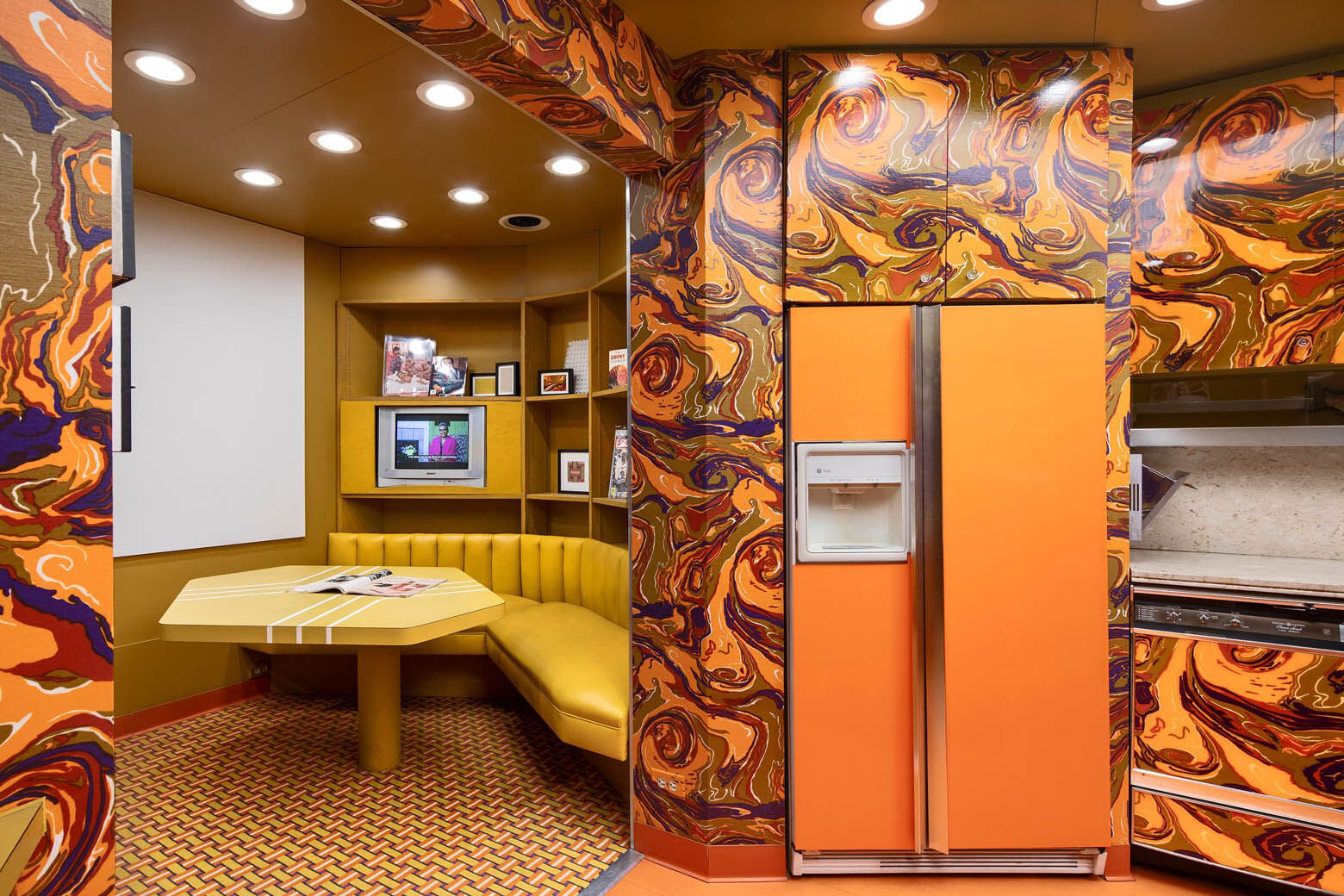
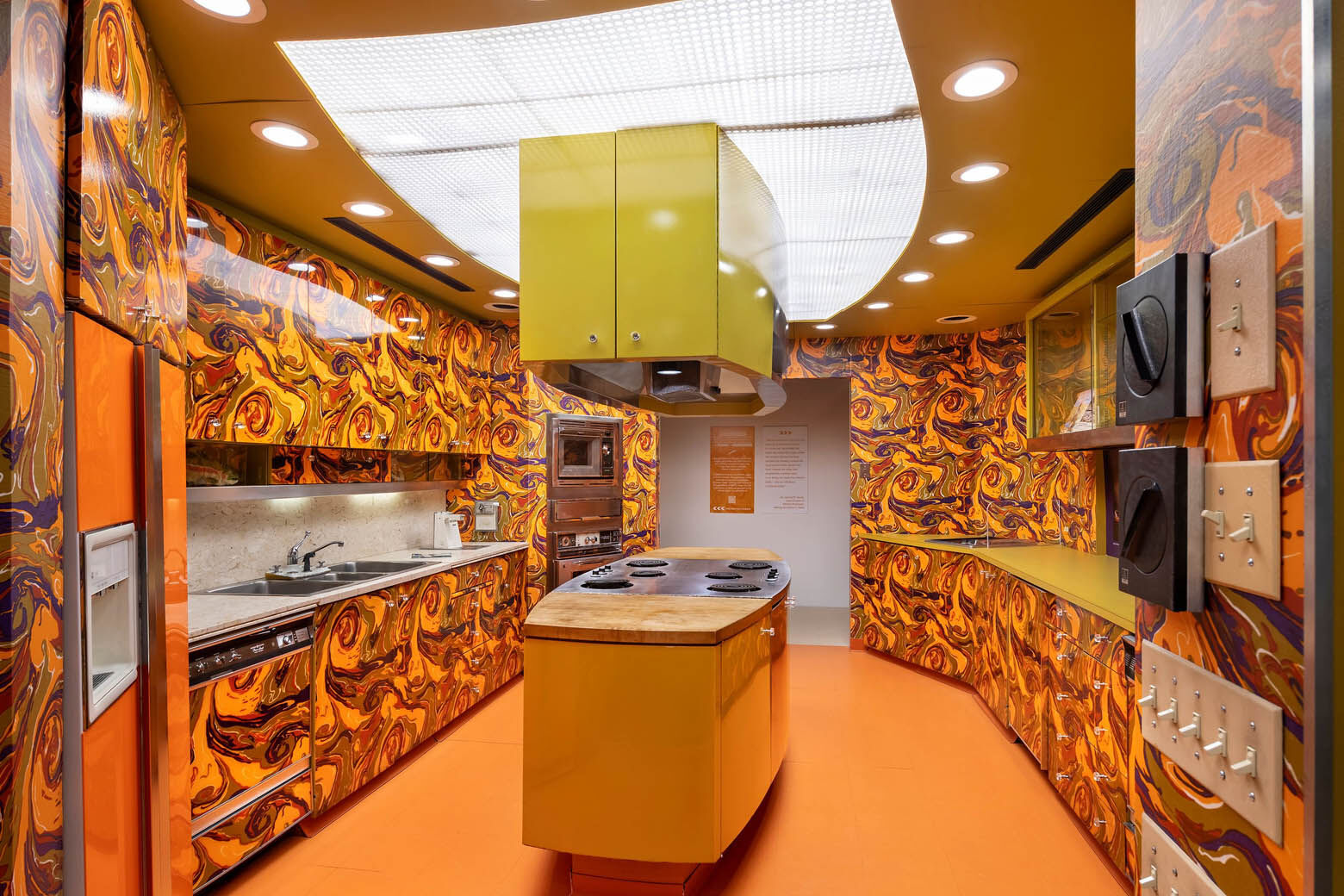
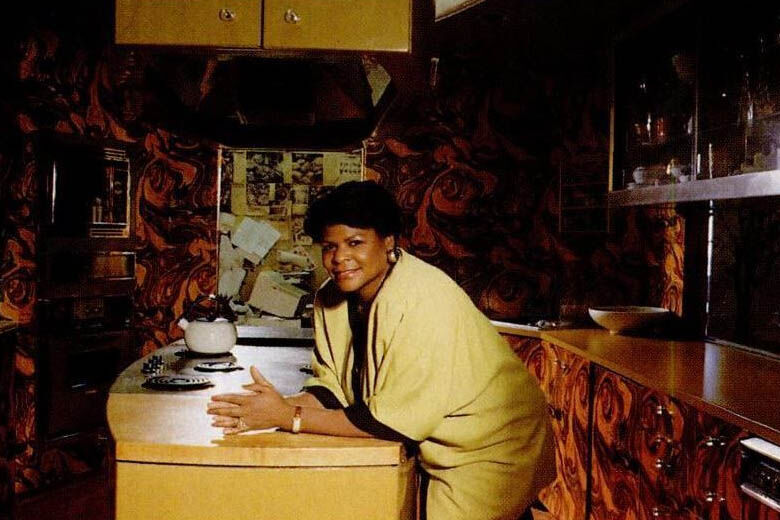
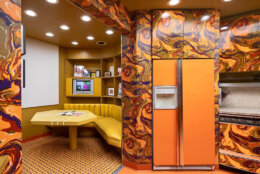
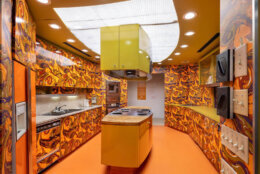
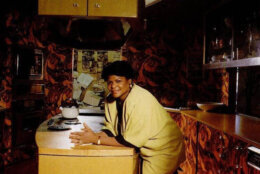
Black women in the 1970s often opened the pages of Ebony magazine to plan dinner menus, holiday parties and other home entertainment ideas.
The magazine’s editors cooked hundreds of recipes in an iconic test kitchen complete with all-electric appliances, a fully-stocked wine rack and bold, orange, purple and avocado green psychedelic wallpaper.
The famed test kitchen has a new home at the National Museum of African American History and Culture in the District.
“It is the largest object we’ve ever collected,” said Joanne Hyppolite, the supervisory curator of African Diaspora. “It’s the ultimate period room, if you think about it. They never changed anything since they designed it in the 1970s.”
Johnson Publishing Company, which owned Ebony magazine, built the 26-by-13-foot kitchen in 1972. Editors used it to test and prepare recipes and then style the food for photographs used in the magazine. Palm Springs, California-based interior designers William Raiser and Arthur Elrod were called in to design the space.
It was the height of modernity, cutting-edge style and Black culinary excellence when the magazine placed it in the Johnson Publication building in Chicago, Hyppolite said.
“It was a legendary space in a legendary building,” she said. “Period kitchens are often located in spaces such as historic homes, where we know that cooks were enslaved Black people or servants. So, having a test kitchen demonstrates Johnson’s ability to bring agency and control over Black culinary representation.”
The editors, who all had home economics degrees, featured everything from appetizers to main entrees to after-party drinks. The fashion and food sections were the magazine’s most popular columns.
“I love that they didn’t reduce Black food to just southern or soul food,” Hyppolite said. “It recognized that Black people live all over the country and all over the world. And they’re interested in international cuisines.”
The famous kitchen was almost lost to improvements. In 2010, the Johnson family sold the publishing company building to Columbia College in Chicago. Seven years later, the university sold the building housing the kitchen to a developer. But successful grassroots efforts to designate the former headquarters as a landmark saved the kitchen from demolition.
Hyppolite said the kitchen will need needs to undergo a number of renovations before visitors can see it in person.
“We’ve got to rebuild it again,” she said. “And we’ve got to figure out a plan for where in the museum it’s best situated.”
The Ebony kitchen is expected to open some time after 2027, according to Hyppolite.







